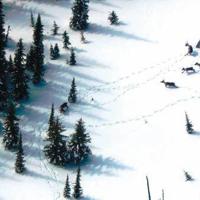Blue Steel
Well-known member
- Joined
- Feb 26, 2023
- Messages
- 980
To save time and money (jk) maybe WDFW needs to team up with or get data from Oregon DFW, if the latter is farther along studying similar types of things. Oregon by ballot banned hound hunting of cougars and bears in mid 1990s, and we had wolves by early 2000s so we're quite a ways down the road of having all three predators roaming where the ungulates used to roam.There is a “Predator/Prey Project” being completed by the Department. What is Washington's Predator-Prey Project Aimed at Achieving? Assessing the effects of predation on ungulate populations in managed landscapes with wolves. Determining the degree of influence wolves have on cougar space use, foraging ecology, and population dynamics. This is incomplete at this time.








